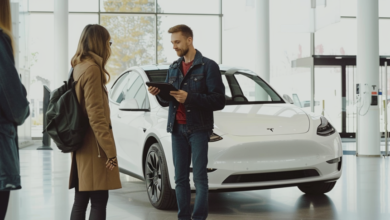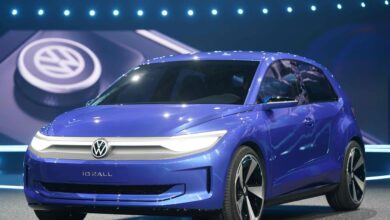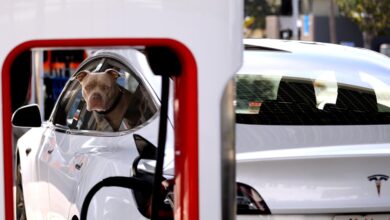Plugin Hybrids Take Advantage Of European EV Pause But Will It Last?

The American Council for an Energy-Efficient Economy’s annual Greener Cars ratings recently declared … [+]
Car makers claim ridiculously impossible fuel efficiency for them, greens hate them, Elon Musk ridicules them, and governments want to outlaw them, but plug-in hybrid electric vehicle sales are going from strength to strength.
PHEV sales are gaining momentum because electric vehicle growth has paused, probably temporarily, as the next round of electromobility awaits vehicle choices that provide big value appeal for average earners.
The trouble is, European Union law will eliminate this option by 2035 when all new car sales must be electric. That’s how the current law stands, but it may not survive the European Parliament elections in June where these net zero carbon dioxide laws may spell the end of the careers of politicians closely associated with this policy.
In 2024’s first quarter, EV sales in Europe rose 6% to around 460,000 compared with the same period last year, while PHEV sales accelerated by 14% to 260,000, according to data from Germany’s Center of Automotive Management. In China, the U.S. and Europe EV sales rose 11% to 1.75 million, while PHEVs rose 52% to 1.1 million.
“In Europe, EV sales are losing some of their momentum,” said CAM director Professor Stefan Bratzel.
Long-term forecasts for EV sales in Europe are still very strong, with most expectations centering around 9 million a year in 2030, compared with about 2 million last year. PHEVs are still expected to remain the poor relation, hovering above and below 1 million sales a year through 2030.
But the immediate future looks weak for EVs.
“The ramp-up of fully electric cars is stalling at a critical level transition phase and is moving in favor of combustion engines and hybrids, particularly PHEVs,” Bratzel said in a report.
Matt Schmidt of Schmidt Automotive Research said new PHEVs are offering EV-only range of over 60 miles and also offer DC fast charging. PHEVs could be about to experience a second lease of life in the Western European market.
“As the private market for EVs stagnates with withdrawals of key (government) purchase subsidies, major manufacturers like VW appear to be targeting corporate drivers with PHEVs that offer the prospect of higher profit margins and lower list prices than their EV counterparts,” Schmidt said in a report.
According to Schmidt Automotive, the top selling PHEV in the first 2 months of 2024 in Western Europe was the Volvo XC60 with 7,803, followed by the Ford Kuga (6,478), and the Mercedes GLC (6,055).
Toyota RAV4 Plug-in-Hybrid
The initial wave of EV sales exuberance from well-to-do early adopters, then corporate purchasers, has run out of steam. Manufacturers like Mercedes, Volkswagen, Ford Motor and General Motors are cutting over-ambitious EV production plans and bigging up PHEV output. PHEVs provide an ideal step-up into the EV world with their improved electric-only ranges, which now commonly provide at least 50 miles of battery-only driving.
This combination of PHEV buyer enthusiasm compared with increasing doubts about the value offered by EVs, is mainly because they eliminate core range anxiety. But PHEV combined range claims are controversial.
A recent report from the European Commission, the EU’s executive arm, showed PHEVs emit 350% more CO2 emissions in actual driving than manufacturers’ claims. My own recent review of the Mazda MX-30 R-EV showed its claim of 282.5 mpg was ridiculously overblown, compared with my average of 76.7 mpg after a week’s driving. But neither number makes any sense because the buyer will only be concerned with how far the vehicle will go without engaging the combustion engine (about 50 miles), and what’s the long-range maximum (about 400 miles). This Mazda uses an 830cc rotary combustion motor to extend the range of the battery.
Green lobby groups like Transport & Environment detest PHEVs. T&E points to corporate cheating that makes them, because of the extra weight of battery and two engines, less efficient than regular ICE vehicles if the battery isn’t used responsibly. Corporate users often have no incentive to charge the battery if fuel bills are paid for, so the added weight would allegedly make PHEVs more dangerous to the climate.
T&E made this comment.
“Real-world data once again shows that PHEVs are vastly more damaging for the climate than official numbers suggest, barely performing any better than a normal internal combustion engine car,” said Anna Krajinska, T&E Vehicle Emissions and Air Quality Manager.
“Carmakers have designed PHEVs for meeting their CO2 targets rather than actually reducing CO2 emissions. Their very limited electric range and lack of fast charging make it impossible to drive electrically on all but the very shortest of trips. Carmakers should have long stopped wasting time on these fake electrics and instead focused on BEVs which have been proven to deliver large CO2 savings,” Krajinska said.
This seems a blinkered approach. Private users would have a strong incentive to regularly plug in because in Britain the tax on gasoline and diesel is an eye-watering roughly 75%. Other European nations levy comparable taxes. Banning PHEVs would shut down an effective way for average private buyers to drive electric and cheaply most of the time. For the average driver 50 miles would be much more than their daily needs.
Jack Parsler from charge point installer Crystal EV of Britain doesn’t like hybrids, period.
“Hybrid vehicles are undermining the important environment work to electrify the U.K. transport network,” Parsler said in an email.
Elon Musk famously doesn’t like plug-in hybrids, or any type of half-hearted attempt to go electric. He has scorned them as amphibians or transitions.
Not everyone agrees.
The American Council for an Energy-Efficient Economy’s annual Greener Cars ratings recently declared the Toyota Prius PHEV was number one, and the Toyota RAV4 PHEV was sixth out of 10 other EVs.
Xiaomi SU7 EV (Photo by Xavi Torrent/Getty Images)
CAM’s Bratzel said in an interview that EV sales need to be revived by new, ground-breaking models.
“In view of the omnipresent climatic threat, this (PHEV) development and talk of shifting (EU) emissions targets is alarming. What we need now are technically advanced, mature and attractively priced models. This is the only way to handle the change from early-adopters to mass- market buyers. These models already exist, like the Xiaomi SU7 and entry-level vehicles like the BYD Seagull and Wuling Bingo are increasingly coming from China. This should give the European industry something to think about,” Bratzel said.



